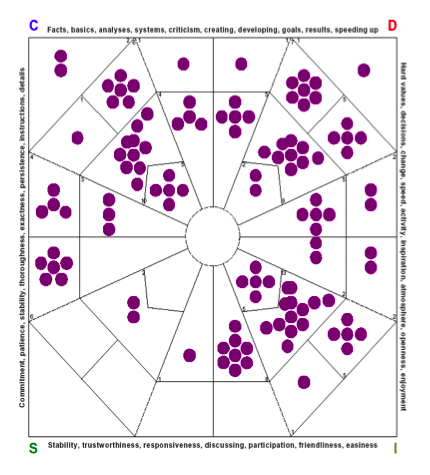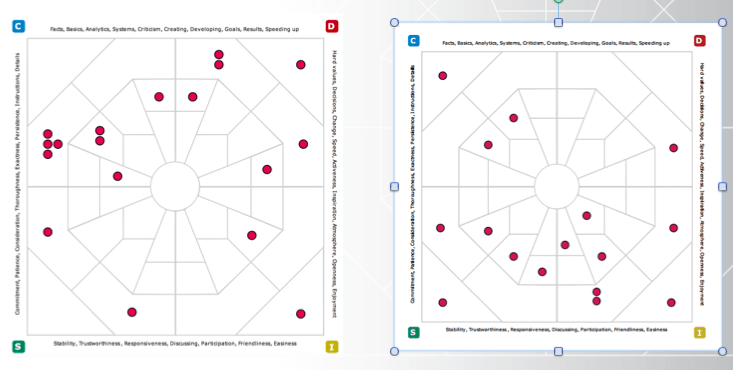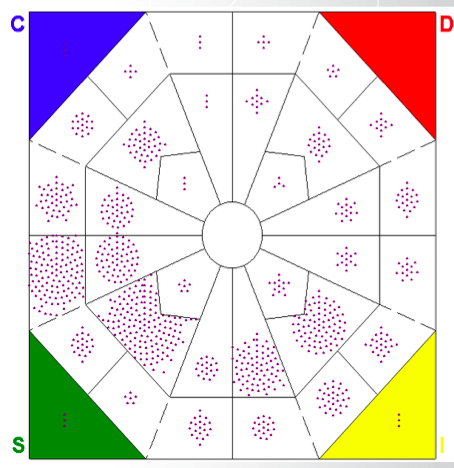How can CEOs and leadership use the DISC assessment tool to better manage their employees? 'Using DISC profiles at the Organizational Level' webinar is part 3 of our Using Team DISC Assessments series.
In part one of the series, we discussed how Team DISC Assessments can provide supportive information for teams to achieve success. The idea is to help people become more effective team members and develop a successful team. In part two, Manager's Playbook, we focused on how managers could use team DISC assessments to better lead and develop their teams. Now we focus on how we manage and use DISC Profiles at the organizational level.
The Progression to DISC Profiles at the Organizational Level
One of the best qualities of the DISC tool is the ability to access a large variety of data using one common framework. First, your employees complete the DISC assessment. Once their DISC profile is generated, you then have access to a variety of DISC reports including leadership, sales, etc. DISC assessments help employees learn more about their DISC style. Once they know their DISC style, they also learn how to make appropriate adjustments in their behavior in order to be successful. In addition to the individual reports for your employees, managers can receive tailored reports on how to better manage and coach their team.
Now we can move on to team applications. Team DISC assessments are easy to create and easy to use. Teams use them to learn more about themselves. Groups can discuss team dynamics in a safe setting; DISC doesn't make value judgments. DISC reports provide data that can be commonly shared and understood to help teams find their 'aha' moments. On the next level, managers can use the Manager's Playbook, a team DISC assessment designed for the team leader. The Manager's Playbook helps the team leader to motivate, communicate, and develop their teams.
Finally, we have progressed from individual DISC reports to team DISC reports. Next, we want to take a step back and look at the bigger picture issues. We can start by understanding why we need to use DISC as a strategic tool for executives to look at teams, departments, regions, and the whole organization.
Why Do We Need DISC Profiles at the Organizational Level?
Bank lenders are expected, and even required to make loan decisions based on sound data and metrics. Lending institutions require thorough financial details of a potential client before they will provide a loan. However, leaders may be forced to make decisions about their employees in a vacuum; without that critical piece of solid data. Leaders may feel they need to make decisions based on gut feelings or simply hoping it's the correct one. DISC provides leaders with solid objective data to make better decisions.
Leaders often cite employees as their company's most valuable resource. DISC allows leaders to have access to sound metrics to strengthen and elevate their company's performance. They need to understand how their employees communicate and what motivates them. DISC can be an analytical organizational development tool for leaders to understand complex issues more clearly. DISC data may not have all the answers, but it can help leaders know what questions to ask.
Using DISC to Look at Sales Employees

Here's an example of how leaders can use DISC profiles at an organizational level. The Shotgun Map represents a real company in the pharmaceutical industry. We are looking at their entire sales force of 118 employees. The most obvious observation is seeing less S-style employees than any of the other DISC styles, but it really doesn't tell us more than that. Leaders may too quickly assume that S-styles are not suited for the company. However, we can't make clear, informed decisions solely based on the Shotgun Map data. We need to put the data into context. One way to do that is to slice the data.

We have taken the 118 sales people from previous DISC map and zeroed in on the top 9 sales performers. The story starts to emerge, but it may still not be the entire story. Again, sales managers may see the results and assume they should hire more D-styles and I-styles. Managers must avoid jumping to conclusions when the story is not complete. In context, the data only showed top performers during a one month sales period. The story changed. S-style and I-style employees were actually the top sales performers when the data reflected sales revenue over longer periods of time. D-style and I-style employees also had much higher turnover at this company, while S-styles and C-styles tended to stay loyal. The information helps leaders know what questions to ask. For example, "how much is he/she willing to invest time and money into training?"
Using DISC Profiles Beyond the DISC Reports
Leaders can look at the DISC data in many different ways. In addition to extracting top sales performers by DISC styles, they can look at their employees by age groups. How do Millennials versus Baby Boomers perform in certain roles? They can slice the data to look at regions, departments, etc. Leaders can use the DISC tool to ask the right questions and to make more sound decisions. Each company has it's own unique situations and challenges and the above company is just one example.
Additionally, leaders can use DISC profiles at the organizational level to look at trends. Are there certain DISC styles of employees that tend to leave the organization more than others? Are certain managers losing productive employees more than others? What is the DISC style of the managers compared to the DISC styles of the employees? Is there any relationship between the DISC styles? The Extended DISC executive dashboard can help leaders quickly identify these trends. Leaders don't need to adhere to one standard team DISC report. Leaders can run specific and customized DISC data for their teams.
Using DISC profiles to Identify and Manage Conflict Between Teams

Sales and production teams are a classic example of conflict between two different groups. One group, with more C-styles and D-styles, is clearly more task focused while the other, with I-styles and S-styles, tends to be more people focused. The two groups interact often. We would be able to understand more if we identified key players and team leaders. The teams also need to understand how similar DISC styles can amplify the strength and areas of development behaviors. Again, leaders with this information can ask more effective questions and identify areas to improve. The employees may be more receptive because the information is based on their own DISC profiles and not the sole opinion of the managers.
DISC Profiles at the Organizational Level

We've looked at using DISC at department and team levels, but how do we apply it at the broader organizational level? You can look at the entire organization using our DISC tool. Leaders can see their organization at a broader macro level. Leaders can better plan, anticipate problems, and prepare for challenges.
Looking at the example, there appears to be a higher concentration of S-style employees. For the D-style CEO, he/she may become more aware of the S-style employees. The D-style CEO may feel comfortable with the company's constant change, but the S-style employees may not. He/she can better identify adjustments he/she needs to make in order implement company change effectively.
The DISC team map also shows a higher concentration of I-styles and S-styles which are the people-oriented styles. Companies tend to have concentrations of styles. Companies rarely, if ever, have evenly distributed DISC styles amongst employees. The CEO can use this information to make decisions that affect his/her employees.
Your DISC Data is limitless in potential applications.
Our clients have found many uses for DISC data in organizational development. CEOs use it to better understand their employees which helps them know how to motivate and communicate with them. In addition, leaders can determine how much direction or independence employees may need. What is the best way to facilitate change? People keep saying the speed of change appears to be faster and faster. How do I, as a leader, manage constant change? Our clients have found limitless ways of using the DISC data.
Looking at DISC profiles at the organizational level is critical, but we always need a place to start. First, leaders must look at themselves. Leaders, just like anyone else, can only control and modify their own behaviors. We can't force others to modify their behaviors. Therefore, the leaders who gives more value to DISC and practices DISC regularly, will find improved communication within his/her company. The use of DISC filters down from the CEO to the C-level team, then to the managers, and ultimately to the entire organization.
